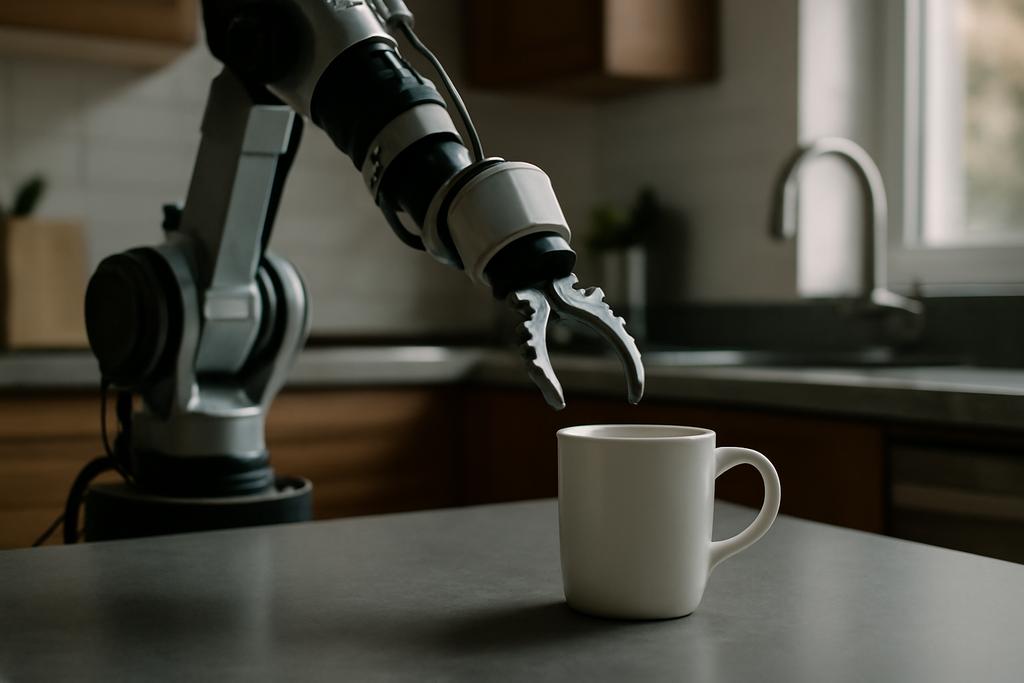Why Does It Matter Where Things Are and How They’re Oriented?
Picture a robot in a kitchen trying to grab a mug. It’s not enough for the robot to just spot the mug in a photo; it needs to understand exactly how the mug is positioned in three-dimensional space. Is it upright or tilted? How far is it? Which way is the handle facing? This problem—figuring out both what objects are in an image and how they’re oriented in 3D—is at the heart of many technologies, from autonomous cars navigating busy streets to augmented reality apps blending virtual objects into our world.
Traditionally, these tasks have been tackled separately: first, detect the object in the 2D image, then estimate its 3D pose. But this two-step dance has its pitfalls. If the first step stumbles, the second can’t recover. Plus, many methods rely on depth sensors, which aren’t always available or practical.
Enter the team from Saarland University and the University of Technology Nuremberg, led by Tom Fischer and Xiaojie Zhang. They’ve flipped the script by creating a unified approach that simultaneously detects objects and estimates their 3D poses using just a single RGB image—no depth data needed. Their secret weapon? Neural mesh models acting as 3D prototypes of object categories.
From Pixels to 3D Prototypes: The Magic of Neural Meshes
Imagine having a digital clay model for each category of object—a bottle, a laptop, a mug—that captures the general shape and features of that category. These are the neural mesh models. Unlike rigid CAD models that represent a single instance, these meshes are learned representations that can flexibly adapt to different shapes within a category.
The researchers train a neural network to extract features from a 2D image and align these features with the 3D features of the mesh prototypes. This alignment creates dense correspondences between points in the image and points on the 3D mesh. Using a clever algorithm called multi-model RANSAC PnP, the system can then detect multiple objects and estimate their poses all at once.
This approach is like having a universal translator between the flat world of images and the spatial world of 3D objects. By unifying detection and pose estimation into a single model, the system avoids the cascading errors common in two-stage pipelines and gains robustness against image noise and distortions.
Breaking Records and Building Resilience
On the REAL275 benchmark—a challenging dataset of real-world images—the unified model outperforms previous state-of-the-art methods by nearly 23% on average across key metrics. This is a significant leap, especially considering it uses only RGB images without depth information.
But accuracy isn’t the only win. The team also tested their model’s resilience by corrupting images with noise, blur, and other distortions. While traditional two-stage methods faltered dramatically, the unified model held its ground, showing far less performance degradation. This robustness is crucial for real-world applications where perfect images are rare.
Why Single-Stage Matters Beyond the Lab
Think of the two-stage approach like a relay race: the first runner (object detector) must hand off the baton perfectly to the second (pose estimator). If the handoff fails, the race is lost. The unified model is more like a solo marathon runner who carries the baton all the way, adapting on the fly.
This simplification reduces computational overhead and makes the system more adaptable to devices without specialized depth sensors. It also opens doors for more seamless integration into robotics, AR, and autonomous systems, where speed and reliability are paramount.
Looking Ahead: A New Lens on 3D Scene Understanding
The work by Fischer, Zhang, and Ilg is a compelling example of how merging tasks and leveraging learned 3D prototypes can push the boundaries of what machines understand from images. It challenges the notion that depth sensors are necessary for precise 3D pose estimation and shows that with the right representations and algorithms, a single RGB image can tell a richer story.
As AI systems increasingly interact with the physical world, approaches like this will be key to making sense of complex scenes quickly and reliably. The code and models are openly available, inviting the community to build on this foundation and explore new frontiers in unified perception.
In the end, it’s about teaching machines not just to see, but to truly grasp how things sit and move in our three-dimensional world—one pixel at a time.










